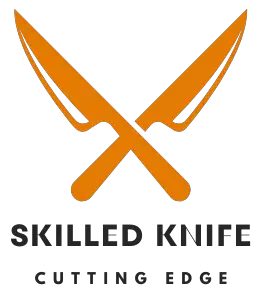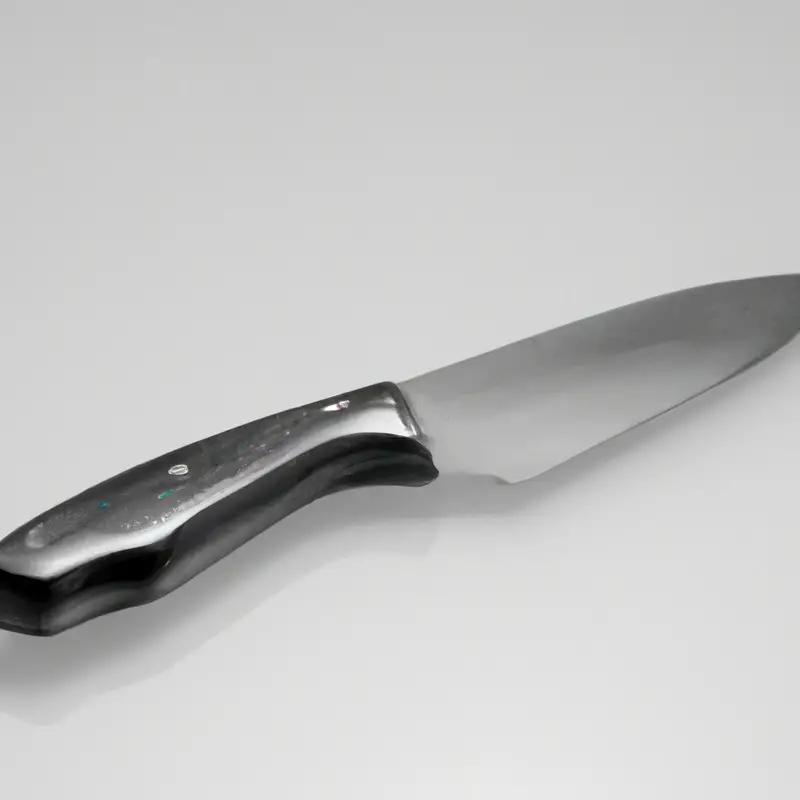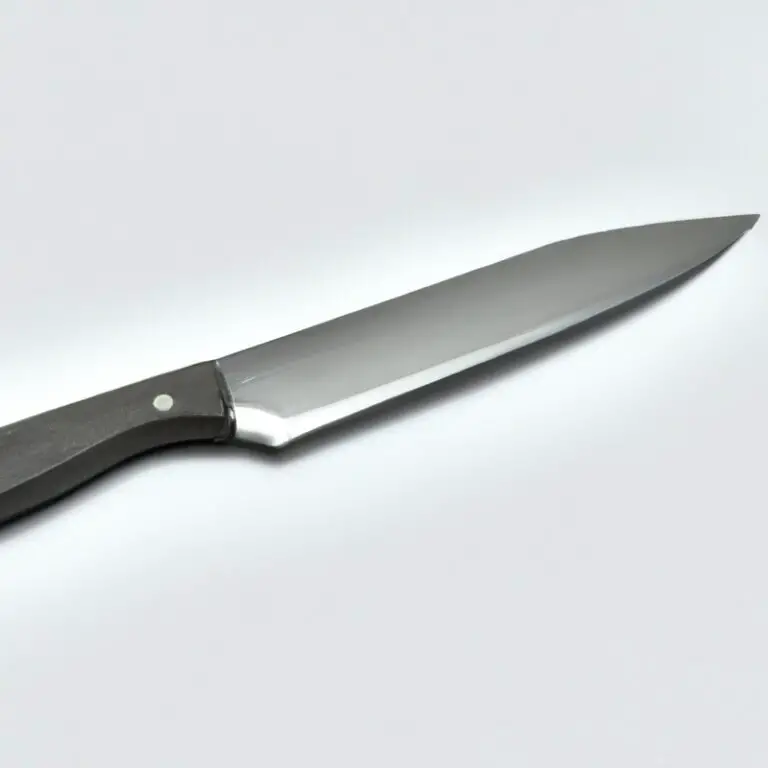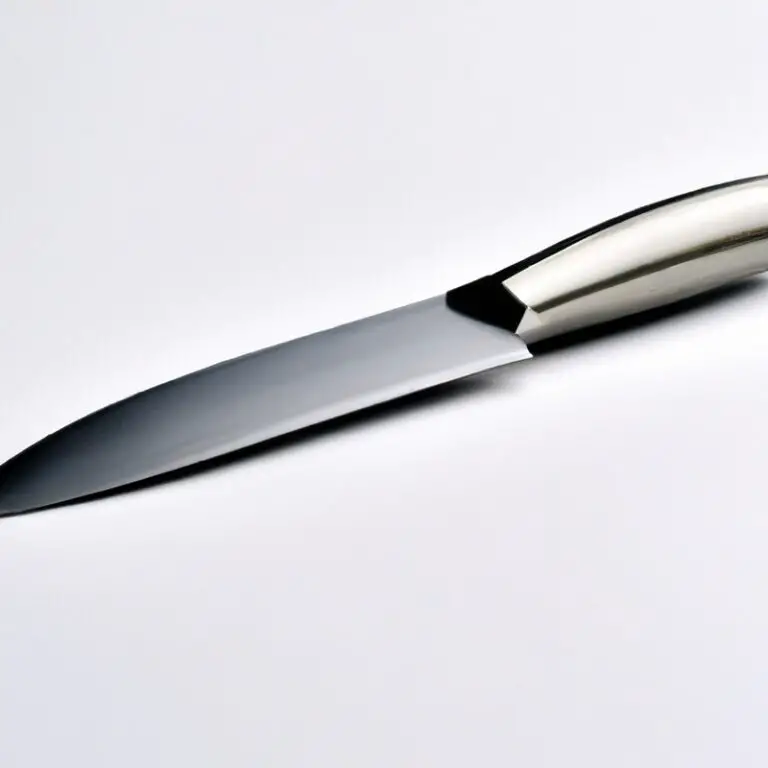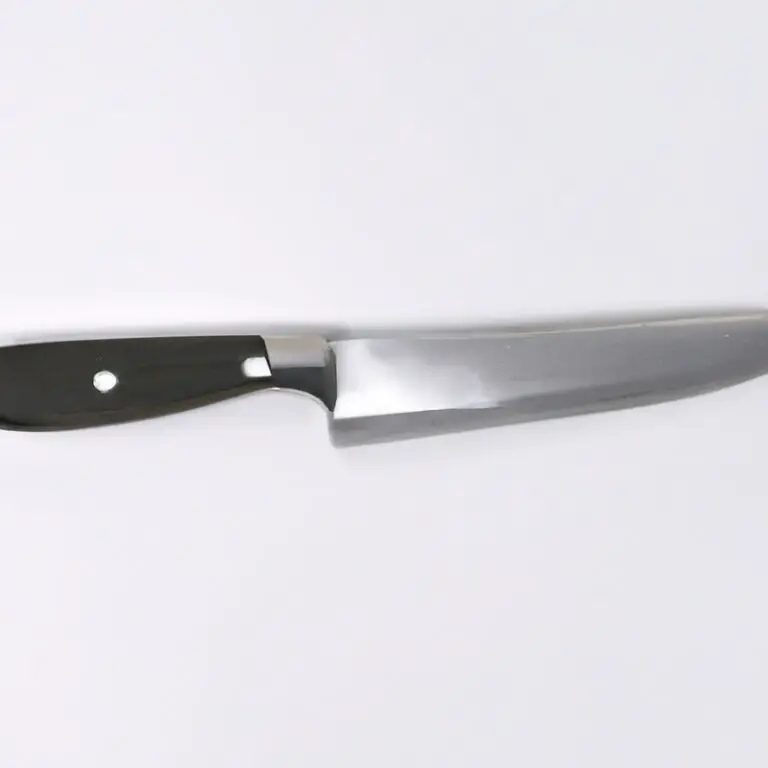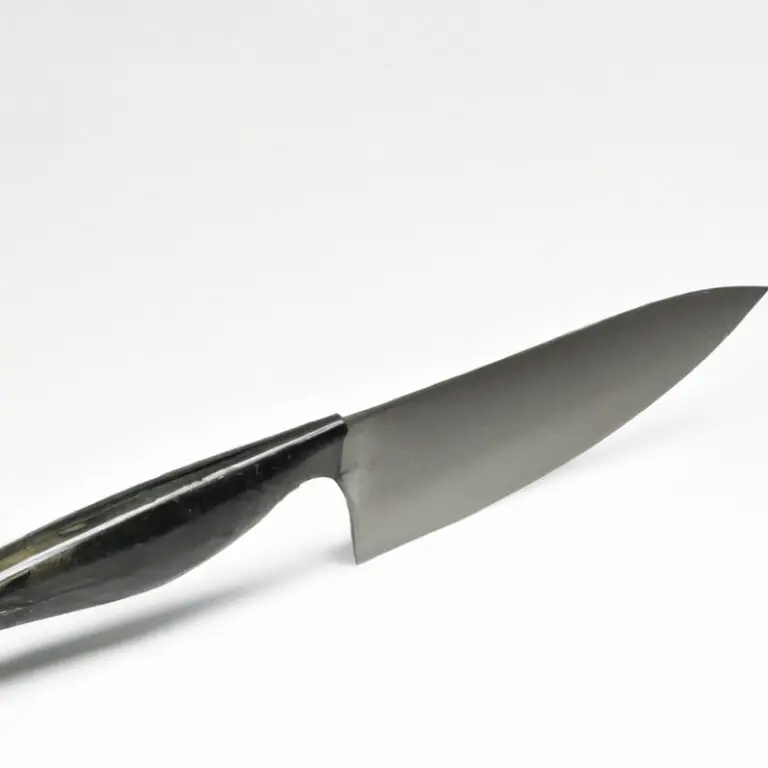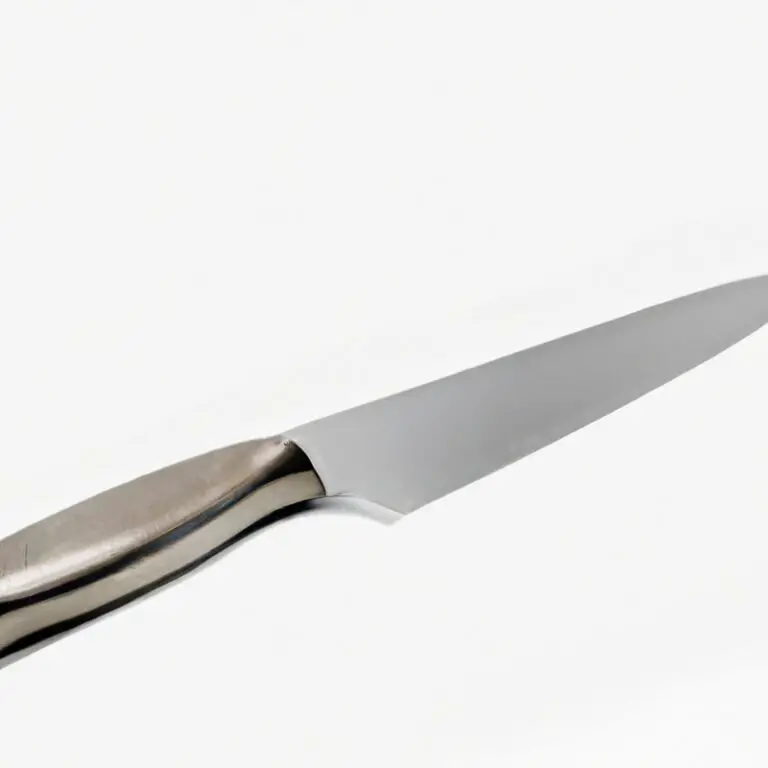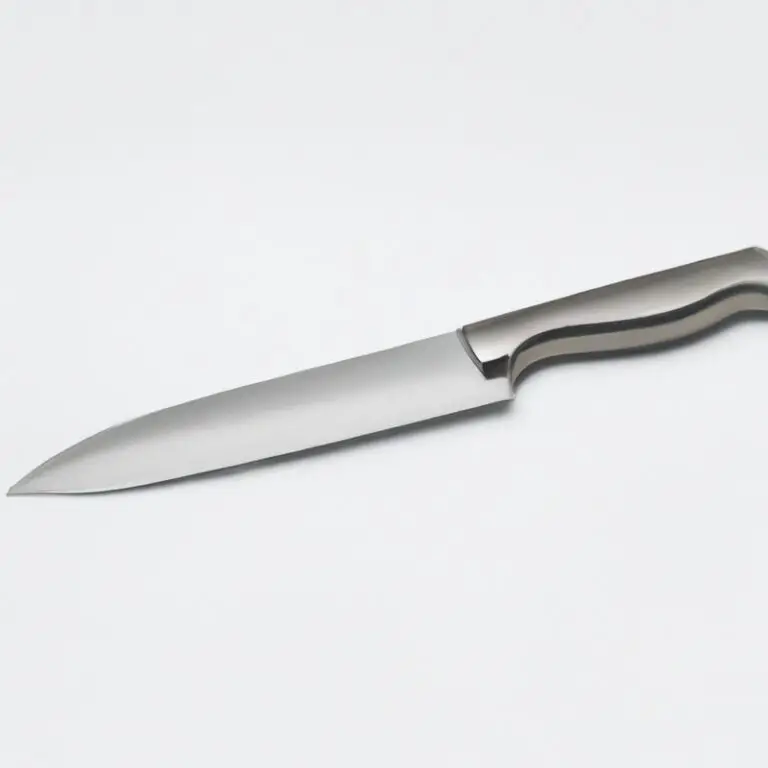How Do I Prevent My Paring Knife Blade From Chipping? Learn Now!
Key Takeaways:
- The type of material the blade is made of affects its resistance to chipping, so invest in high-quality knives with durable blades.
- Proper storage and handling of your knife can help prevent chipping, such as using a blade guard and avoiding chopping on hard surfaces.
- Regular maintenance, such as honing and sharpening, can keep your knife in top condition and prevent chips from forming.
- Using the knife for its intended purpose and avoiding excessive force can also help prevent blade chipping.
Have you ever experienced the frustration of using a paring knife with a chipped blade? Not only does it affect the knife’s performance, but it can also be dangerous.
As a cooking enthusiast, I understand the importance of having a quality paring knife that can perform its job perfectly.
That’s why I am here to share some tips on how to prevent your paring knife blade from chipping. From proper hand placement and technique to honing versus sharpening, I will guide you through the dos and don’ts of taking care of your paring knife.
So, let’s get started!
| Technique | Pros | Cons |
|---|---|---|
| Using a plastic or wooden cutting board | Soft surface reduces blade impact | Can be difficult to sanitize thoroughly |
| Sharpening regularly | Maintains blade edge | May take time and effort to maintain regularly |
| Avoiding hard materials like bone or frozen foods | Reduces blade impact and prevents chipping | May limit certain cutting tasks |
Choosing the right cutting board for your paring knife
When it comes to choosing the right cutting board for your paring knife, the material matters. Avoid glass, ceramic, or metal cutting boards as they are too hard and can damage your knife’s delicate blade.
Instead, opt for a wood or plastic cutting board.
Wood boards are attractive and gentle on knives but require regular maintenance to prevent bacterial growth. On the other hand, plastic boards are easy to clean, lightweight, and affordable but can harbor bacteria if not replaced often.
Ultimately, it’s best to choose a cutting board that suits your needs and budget while considering the impact on your paring knife’s longevity.
The importance of proper hand placement and technique
Proper hand placement and technique when using a paring knife is critical to prevent the blade from chipping. Place your index finger and thumb on the opposite sides of the blade near the bolster and grip the handle with your remaining fingers.
Keep your fingers curled inwards and your knuckles tucked in for better control and stability.
When cutting, use a downward motion with a slight rocking motion for smooth and even cuts. Avoid twisting or jerking motions that can cause the blade to chip.
Remember to keep your focus on the task at hand and always use your paring knife on a stable surface.
By using the right hand placement and technique, you can prolong the lifespan of your paring knife and ensure its optimal performance.
Using a honing rod regularly to maintain blade sharpness
Using a honing rod regularly can help maintain the sharpness of your paring knife and prevent chipping. Honing realigns the edge of the blade, improving its cutting ability.
It’s important to use the honing rod correctly by holding the knife at the correct angle and applying consistent pressure while honing.
Experts recommend honing your knife after every use or at least once a week for optimum results. Remember, honing will not sharpen a dull blade, but it will maintain the sharpness of a well-sharpened one.
Don’t skip on honing and make it a regular part of your knife maintenance routine.
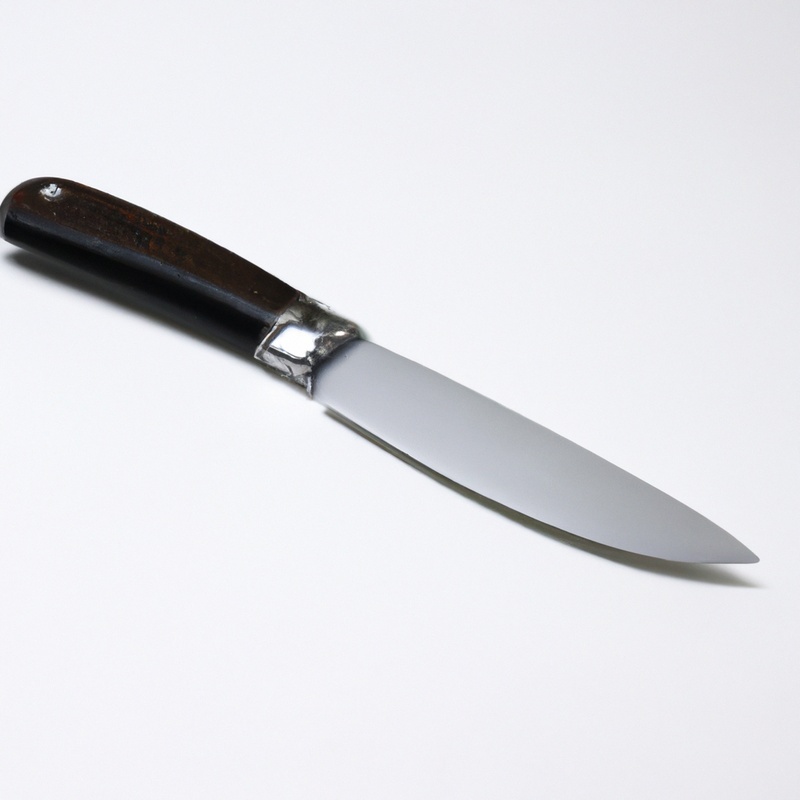

Avoiding frozen or extremely hard foods
Avoiding frozen or extremely hard foods is essential in preventing your paring knife blade from chipping. When a knife encounters frozen food or extremely hard food items, it increases the chances of damaging the blade.
The frozen food could cause the blade to become dull and lose its sharpness, making it more susceptible to chipping.
Therefore, it is important to let frozen food thaw before cutting and also avoid cutting extremely hard food items with your paring knife. Instead, opt for a heavier and more robust kitchen knife to handle such tasks.
By avoiding frozen or extremely hard foods, you will prolong the lifespan of your paring knife blade and ensure that it remains functional and effective over time.
Storing your paring knife in a safe and protective manner
Storing your paring knife in a safe and protective manner is essential to prevent blade chipping. Here are some tips to follow:
- Use a knife holder: A knife holder is a safe and convenient way to store your paring knife. It keeps the blade protected and prevents it from coming into contact with other objects.
- Use a magnetic strip: A magnetic strip attached to your kitchen wall is a space-saving solution for storing your paring knife. It keeps the blade safely off the counter and within reach while cooking.
- Keep the blade covered: Use a blade cover or sheath to protect the blade when not in use. This prevents accidental cuts and also keeps the blade safe from any other sharp objects.
- Avoid drawer storage: Storing your paring knife in a drawer without any protection can lead to blade damage and chipping. Knives stored in a drawer can also easily come into contact with other kitchen tools and utensils.
By following these storage tips, you can ensure that your paring knife remains in excellent condition and prevent blade chipping.
Regularly inspecting your knife for any signs of damage
Regularly inspecting your knife for any signs of damage is crucial in preventing chipping. Over time, knives can become damaged from regular use, exposure to moisture, and contact with hard surfaces.
Inspecting your knife before each use can help identify any potential issues and prevent further damage.
Look for signs of wear or chipping on the blade, loose handles, and any rust or discoloration. If you notice any damage, address it immediately by sharpening or replacing the knife.
Proper maintenance and inspection can help extend the lifespan of your paring knife and prevent the frustration of dealing with a damaged blade.
Honing versus sharpening: understanding the difference
To prevent paring knife blade chipping, it is crucial to understand the difference between honing and sharpening. Honing refers to the process of maintaining the blade’s edge by realigning it with a honing rod.
This process does not remove any metal from the blade, but it helps prolong the blade’s sharpness.
On the other hand, sharpening involves removing metal from the blade to create a new edge. Honing should be done regularly to maintain the paring knife’s sharpness.
It should be noted that honing does not replace sharpening.
Sharpening should be done on an as-needed basis, depending on how frequently the knife is used. Investing in a quality paring knife means that the blade will require less sharpening, and honing will be more effective.
It is essential to note that using a dull or damaged blade can increase the risk of blade chipping.
Always inspect the knife for damage, store it safely, and avoid using it on frozen or very hard foods. In summary, understanding the difference between honing and sharpening can help prolong a paring knife’s life and prevent blade chipping.
The benefits of investing in a quality paring knife
Investing in a quality paring knife has numerous benefits. A high-quality knife will have a sharper blade that will last longer than a cheaper, low-quality option.
The blade will also be made of stronger materials, which means it will be less prone to chipping, bending, or breaking.
In addition, a quality paring knife will have a comfortable grip that will reduce hand fatigue and increase control. This will enable you to cut with more accuracy and precision, which can lead to better prep work and more aesthetically pleasing dishes.
A quality paring knife can also save you money in the long run by eliminating the need for frequent replacements due to dullness or damage.
It is an investment that will pay off in the long term, making it worth the initial cost. Overall, investing in a quality paring knife is a smart decision that will allow for better cutting, reduce the likelihood of blade damage, and save money in the long run.
How to properly wash and dry your paring knife
To properly wash your paring knife, use warm soapy water and a non-abrasive sponge. Be sure to clean both sides of the blade and the handle thoroughly.
Avoid using harsh chemicals or abrasive sponges, as they can damage the knife’s surface.
Rinse the knife with warm water and dry it immediately with a clean, dry towel. Do not leave the knife to air dry, as this can promote rust.
Store your paring knife in a dry place to prevent moisture buildup and potential corrosion.
Proper washing and drying techniques will prevent damage to your paring knife and extend its lifespan.
Maintaining a consistent cutting angle to prevent chipping
Maintaining a consistent cutting angle is crucial in preventing chipping on your paring knife blade. The angle at which the blade hits the cutting board affects the force exerted on the edge of the blade, leading to chips and dullness over time.
To maintain a consistent angle, start by finding the proper angle at which to hold the knife.
This will depend on the type of knife and the specific task at hand. A general rule of thumb is to hold the knife at a 20-degree angle.
Utilize a honing guide to aid in maintaining a consistent angle.
When cutting, keep the blade steady and avoid twisting or jerking motions. Apply consistent pressure and avoid pushing down too hard on the blade.
Remember to periodically check the angle throughout use and make adjustments as needed.
By consistently maintaining the proper angle, you can significantly decrease the likelihood of chipping on your paring knife blade.
Final Verdict
Preventing your paring knife blade from chipping requires a combination of proper technique, regular maintenance, and investing in a quality tool. By choosing the right cutting board, using proper hand placement, regularly honing the blade, avoiding frozen foods, storing the knife safely, inspecting for damage, understanding the difference between honing and sharpening, washing and drying properly, and maintaining a consistent cutting angle, you can extend the life of your paring knife and ensure optimal performance.
Remember, a paring knife is a valuable and versatile tool in the kitchen, and it’s worth taking the time to care for it properly.
By following these tips, you can enjoy using your paring knife for years to come. Trust us, we’ve got the expertise to help you keep your paring knife in prime condition – happy chopping!
